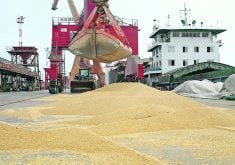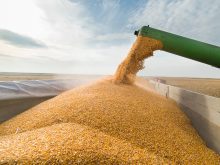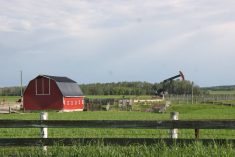CHICAGO, Ill. (Reuters) — A combination of delays to autumn planting and dry conditions in the southern U.S. Plains have left the hard red winter crop vulnerable to freeze damage, crop experts said, which could further tighten supplies of high-protein wheat.
A cold spell is forecast for later in December.
The U.S. Department of Agriculture is expected to show in a Jan. 12 report that farmers have planted even less winter wheat than a year ago, when U.S. acreage fell to the lowest level since 1909.
Read Also

Bunge’s crop mix is changing
Bunge has predominantly been a soybean processing firm, but that’s about to change after the merger with Viterra with softseed processing and grain merchandising gaining ground.
Global supplies of lower-quality wheat are in abundance, but high-protein wheat is tight. Low protein levels in the last two U.S. hard red winter wheat harvests have sent millers and bakers scrambling to find enough supplies of top-quality grain.
Heavy rain in early October in Kansas and Oklahoma slowed seeding of the 2018 crop, leaving wheat plants less time to produce tillers and secondary root systems ahead of winter dormancy. The under-developed plants are less resistant to the cold.
“We’ve still got a lot of very small wheat. We are not where we’d like to be at this point as far as plant development (goes),” said Mark Hodges of Plains Grains, a wheat industry group based in Oklahoma.
“I am not saying the sky is falling, but … we could lose some plants.”
While winter freeze damage can at times cause problems, the plants are hard while in dormancy. Greater impacts come when there is spring frost or dry weather once the crop comes out of dormancy.
Hard red winter wheat, the biggest U.S. wheat class, is grown in the southern Plains and milled into flour for bread.
After the heavy rains in October, dry conditions set in.
In Kansas, the biggest U.S. wheat producer, virtually the entire state is abnormally dry and one-fifth of the state is in moderate drought, according to the latest weekly U.S. Drought Monitor, which is compiled by a consortium of climatologists.
“With dry topsoil, we are definitely more exposed to any sharp drop in temperatures,” Romulo Lollato, Kansas State University extension wheat specialist, said of the dormant 2018 crop, noting that dry soil cools more quickly than moist soil.
In Oklahoma, the No. 3 winter wheat grower last year, 28 percent of the state is in severe drought and more than half is in moderate drought.
The winter months are typically the driest of the year in the region, and moisture will not help dormant plants to grow much. However, snowfall can act as a blanket, protecting the crop from frigid air.
A cold spell is expected in the Plains in the last week of December, said David Streit, an agricultural meteorologist with the Commodity Weather Group. While it is too early to say how cold it will get, a few forecasting models projected temperatures falling below -18 C, Streit said.
Some weather models projected late-December snowfall as well.
“I don’t think we’ll be able to improve the moisture situation substantially, even if we do pick up a snow event out of this, but it (snow) would be really helpful to avoid the winterkill risk,” Streit said.
The shortage of high-protein HRW wheat has sent premiums soaring in the cash market. The premium for HRW wheat with 12 percent protein over the Kansas City March futures contract last week reached a 9 1/2 year high at US$2.15 over futures.
The premium for 12 percent protein wheat has doubled since trading at about $1 above futures in mid-August.














